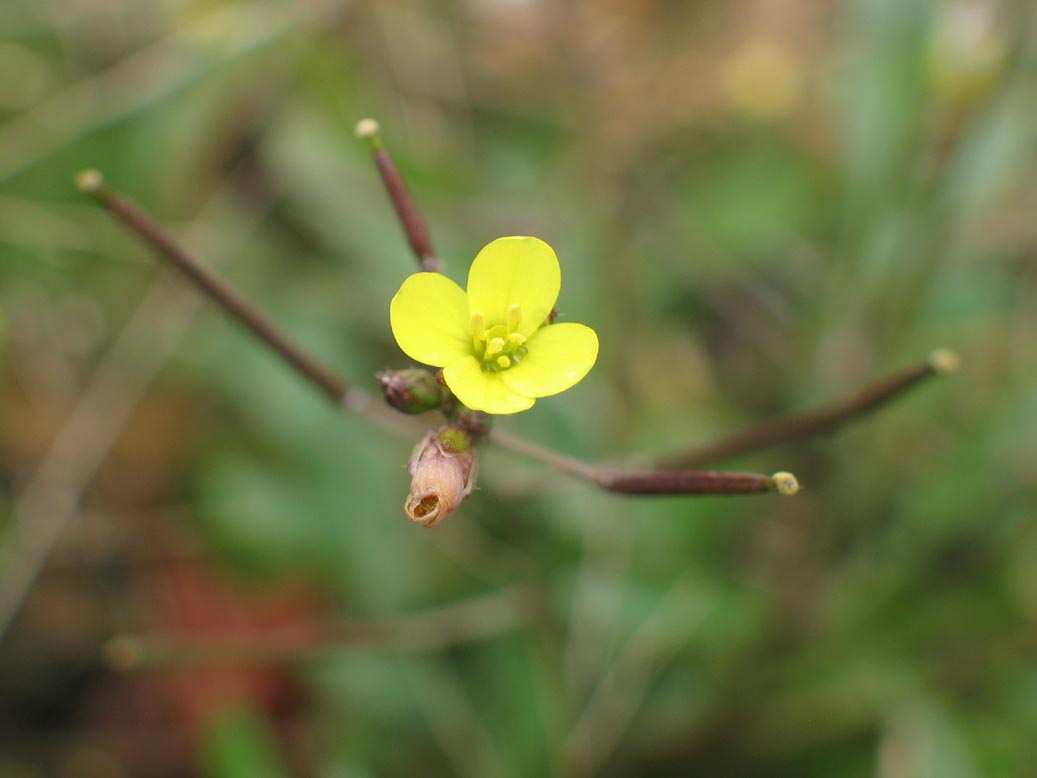|
Family: Brassicaceae |
Annuals, biennials, or perennials; (sometimes suffrutescent); scapose or not; glabrous, glabrescent, or pubescent. Stems erect or ascending, branched. Leaves basal and, sometimes, cauline; petiolate or sessile; basal rosulate or not, petiolate, blade margins dentate, sinuate, or pinnatisect; cauline petiolate or sessile, blade (base not auriculate), margins entire or dentate. Racemes (corymbose, sometimes shortly bracteate basally), considerably elongated in fruit. Fruiting pedicels ascending, divaricate, or reflexed, stout to slender. Flowers: sepals ascending to spreading, oblong, lateral pair not saccate basally; petals yellow or white [purple], obovate, (apex rounded or truncate); stamens tetradynamous; filaments not dilated basally; anthers oblong to ovate, (apex obtuse); nectar glands (4): lateral cushionlike, median cylindrical. Fruits siliques, dehiscent, sessile or (long-)stipitate, segments 1 or 2, linear to linear-oblong, torulose, latiseptate or terete; (proximal segment numerous-seeded, 1-veined; terminal segment 0-2-seeded); valves glabrous; replum rounded; septum complete; ovules [12-]20-36(-46)[-276] per ovary; (style obsolete or distinct); stigma capitate or somewhat decurrent, 2-lobed. Seeds usually biseriate, rarely uniseriate, not winged, ovoid or ellipsoid; seed coat (smooth or minutely reticulate), slightly mucilaginous or not when wetted; cotyledons conduplicate. x = 7, [8, 9, 10,] 11, [13,] 21. Sep erect or ascending, not saccate; pet yellow or white, gradually narrowed to the claw; short stamens subtended by a hemispheric or reniform gland; each pair of long stamens subtended by a short, prismatic gland; ovary linear, with many ovules; style scarcely differentiated; stigma capitate; fr linear, slender, somewhat compressed, shortly beaked, the valves with a prominent midnerve; seeds small, smooth, in 2 rows in each locule; herbs with usually toothed or pinnately lobed lvs and middle-sized fls; pubescence of simple hairs or none. 25, Europe, Mediterranean. Gleason, Henry A. & Cronquist, Arthur J. 1991. Manual of vascular plants of northeastern United States and adjacent Canada. lxxv + 910 pp. ©The New York Botanical Garden. All rights reserved. Used by permission. |


